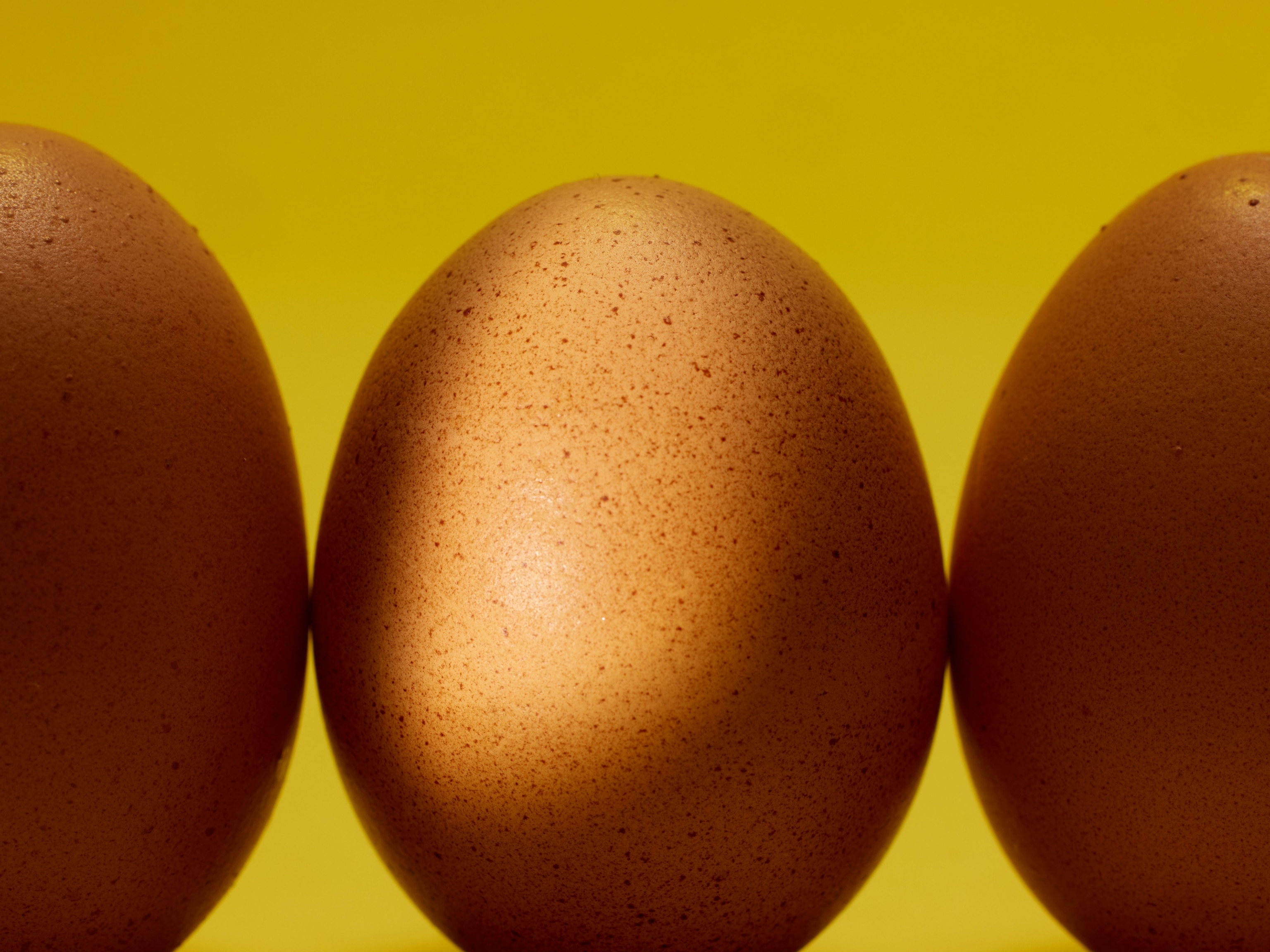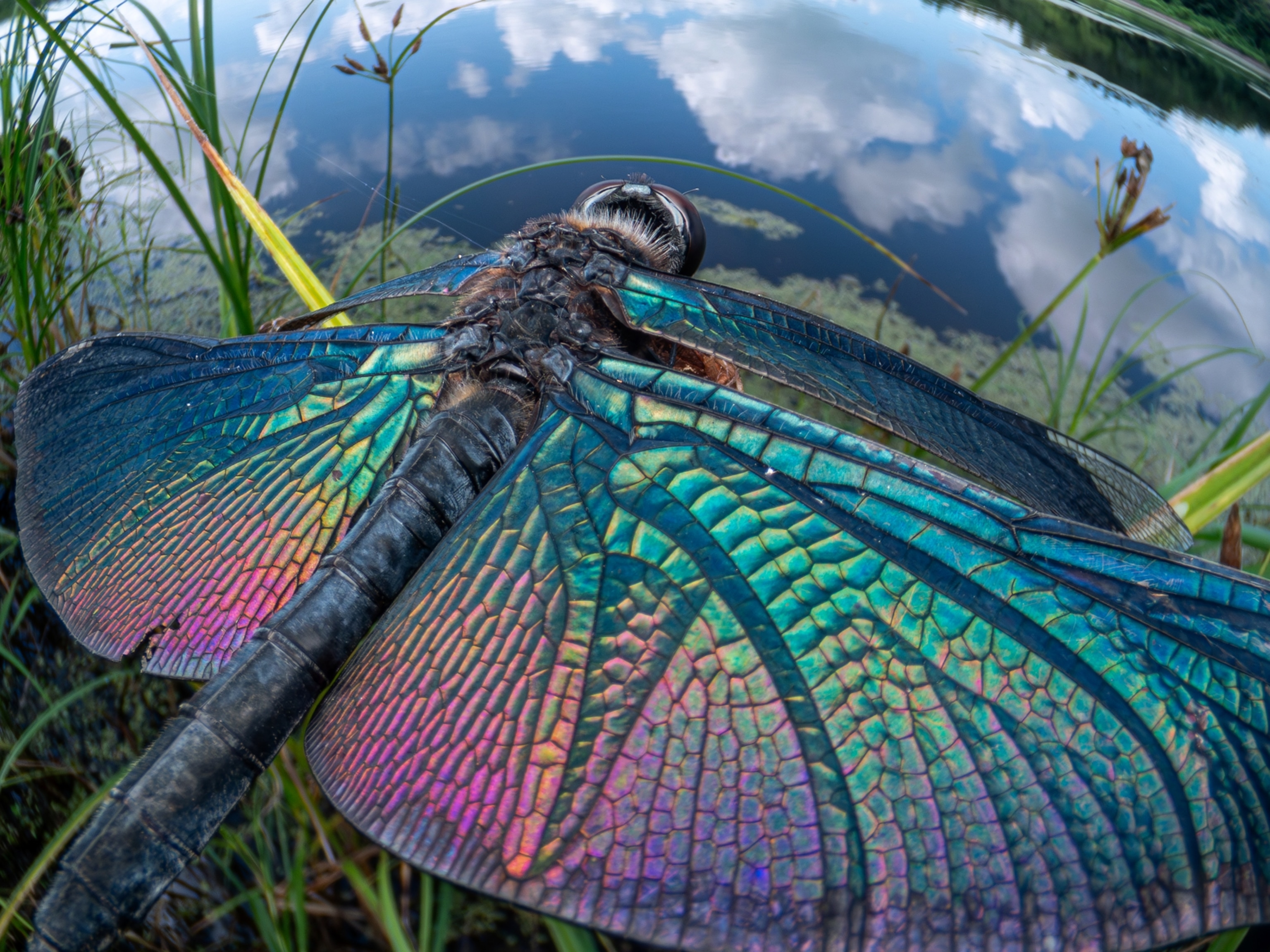
To fight foes, wasp eggs spew deadly gas
To survive moist, underground conditions, beewolf eggs authoritatively defend their turf, all without moving an inch.
Wasps have rather obvious defenses, such as venomous stingers. But their eggs—soft, oblong, and motionless—are vulnerable to foes like fungi.
Enter the beewolf. New research shows that this wasp has evolved an incredible way to protect their young: The eggs act like living gas grenades, fumigating their nursery chamber with anti-fungal fumes.
European beewolves (Philanthus triangulum) are solitary wasps that get their name from the females’ habit of hunting down bees, stinging them with paralytic venom, and dragging them into a dirt burrow.
The beewolf lays an egg on the ill-fated bee, which feeds the carnivorous larva upon hatching. While it’s a good place to hide, the warm, dank chamber is the perfect environment for mold to grow.
Stink bomb
Erhard Strohm, a biologist at the University of Regensburg in Germany, has studied beewolves for more than 30 years, rearing the insects in the laboratory to observe their parasitic reproductive cycle. It was in the lab that Strohm first got an inkling that the eggs themselves were doing something odd. And stinky.
“While opening the observation cage I noticed a strange smell [that] emanated from the egg,” Strohm says. Because the odor was reminiscent of a chlorinated swimming pool, Strohm suspected the cause was some sort of strong oxidant (like chlorine), which all smell similar.
Strohm and his colleagues dug deeper, comparing relative mold growth on paralyzed bees incubated with or without an egg laid on top. Bees carrying eggs stayed mold-free far longer than those without a wasp egg, demonstrating that the egg itself was doing something special.
When the researchers incubated paralyzed bees in chambers with an egg that wasn’t even touching them, they still thwarted the mold, confirming what Strohm’s nose uncovered—the eggs’ weapon was airborne.
Next, the team searched for the gas’s identity. Based on the strong smell, they guessed it might be nitrogen dioxide (NO₂). Many organisms produce the compound’s precursor, nitric oxide (NO)—which becomes pungent nitrogen dioxide once it reacts with oxygen in the atmosphere.
The precursor is used in everything from immune responses to regulating the heart, but it—like nitrogen dioxide—is also an effective antimicrobial in the right dosage.
To see if both gases where involved, the researchers performed a chemical test that marked them with a rouge fluorescent dye. Sure enough, the freshly-laid eggs gave off an intense red glow in the laboratory.
The findings, described in a new study published in BioRxiv, which allows scientists to share results before they are peer-reviewed, stunned the team.

Surprising weapon
“Every colleague whom I told about the brood cell fumigation… was really astonished,” says Strohm, the paper’s lead author.
Andrew Forbes, an evolutionary biologist at the University of Iowa not involved with this study, says he’s fascinated by the fact the beewolves have multiple innovations to protect their eggs, apparently including fumigation. Besides the gas, the wasps also embalm the paralyzed bees before laying any eggs with secretions that help dehydrate the hapless prey and make it less susceptible to fungus.
Beewolves aren’t the only insects to use gas-based defenses. Strohm’s group also found a different species of parasitic wasp that fumigates its nursery with a different sanitizing chemical, but does so as a larva (and not an egg). Andreas Vilcinskas—an entomologist at Germany’s University of Giessen who wasn’t involved in this study—notes that adult earwigs and some larval beetles also create antiseptic gases.
But the fortification of the egg stage and use of nitrogen oxides is an unusual, new take on a vapor-based security system—and it may have some key advantages. Some parasitic fungi can digest the very chemicals made to kill them, but nitric oxide synthesis is very difficult to overcome, says Vilcinskas.

That may be especially true in this case, as the eggs spew out nitric oxide at a high rate, four orders of magnitude greater than background levels in human tissues, for example.
“How the beewolf eggs survive in the highly toxic atmosphere is not yet known,” says Strohm, “but might become important, since under certain circumstances [nitric oxide] can be overproduced and become harmful in humans.”
The finding illustrates the importance of close study of species not typically targeted for research (“non-model” species). Focusing only on a familiar subset of the Tree of Life may miss the most incredible innovations evolution has to offer—many of which may be valuable for technical or medical applications, Strohm says.
“Looking at only a handful of species is certainly not enough to capture the huge variety of adaptations that might yield fundamentally novel and totally unexpected processes,” he adds.




